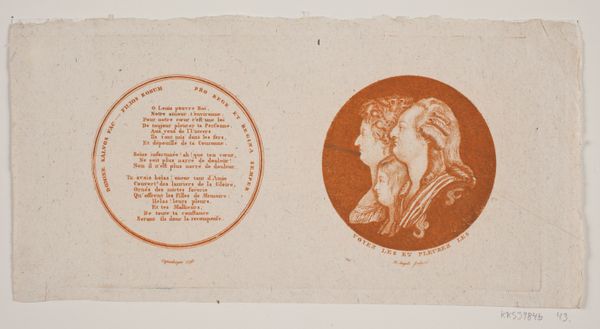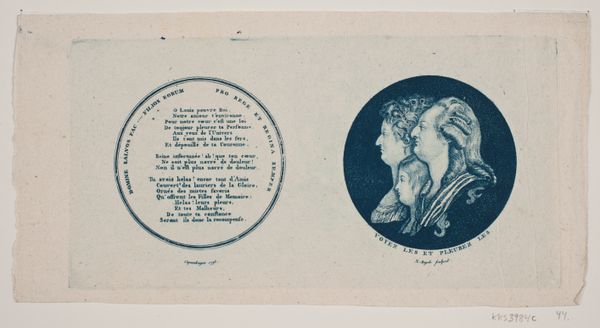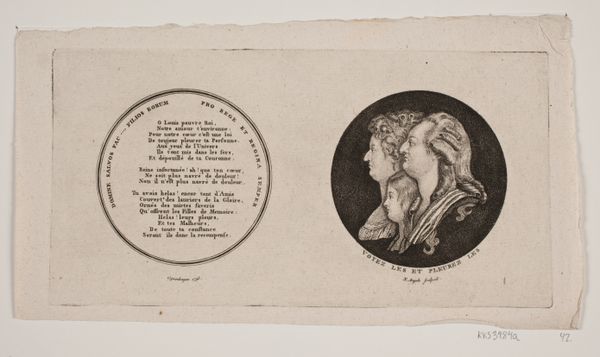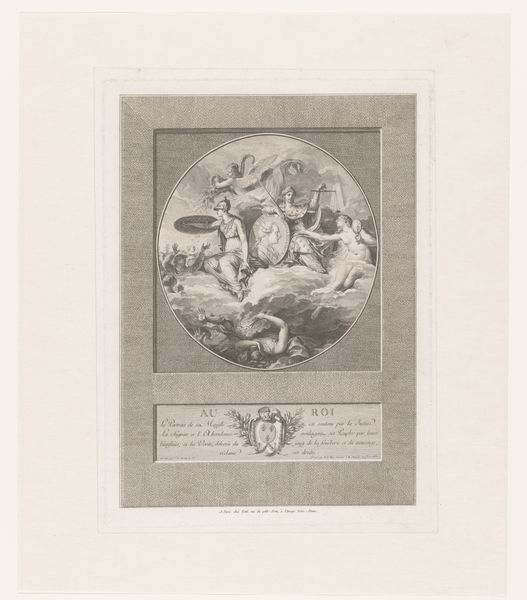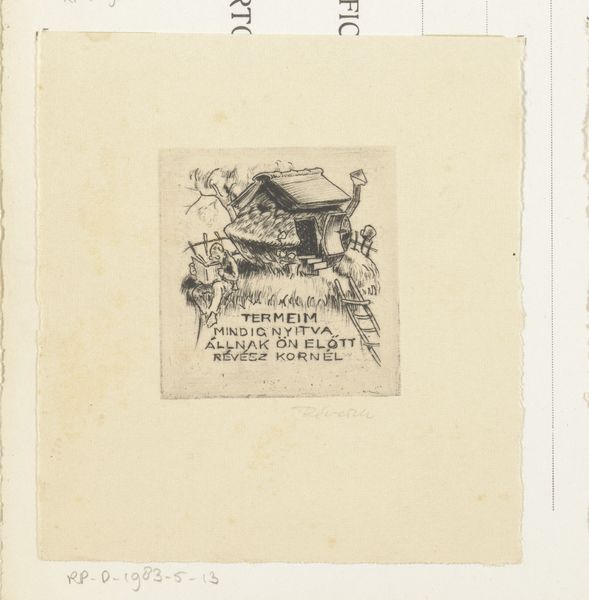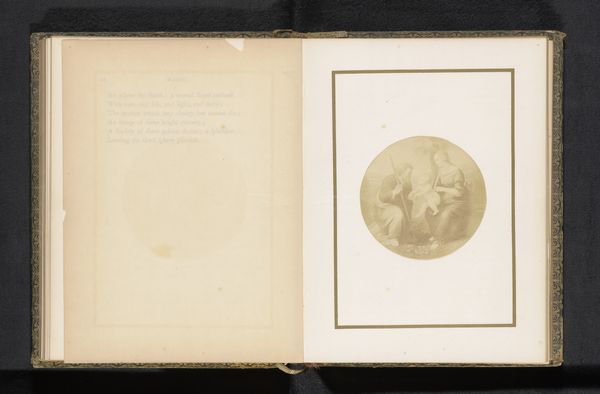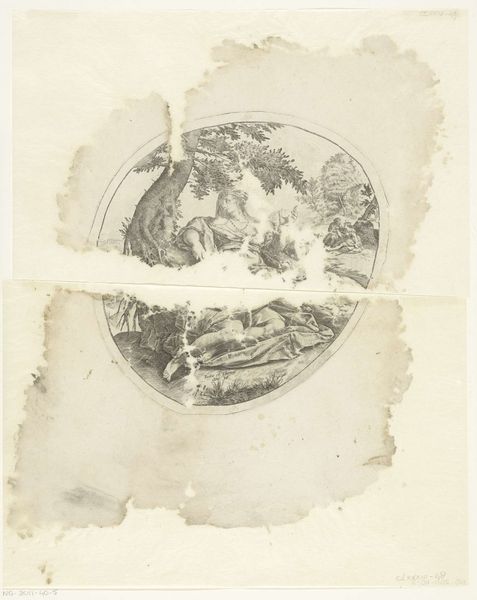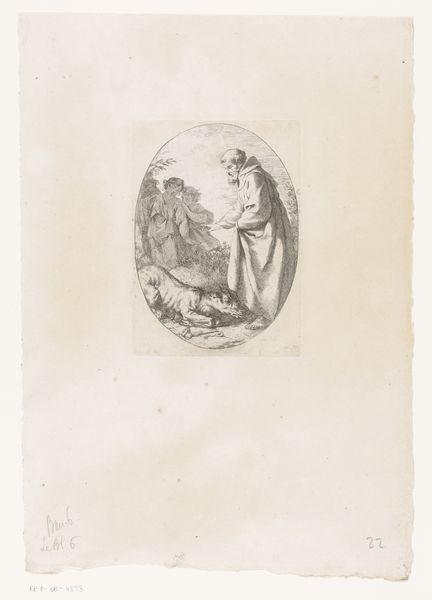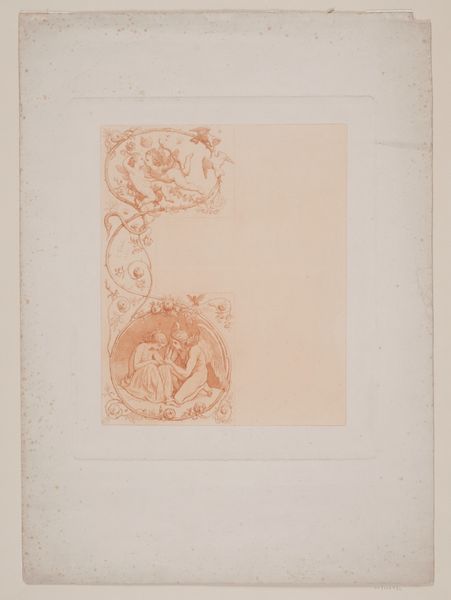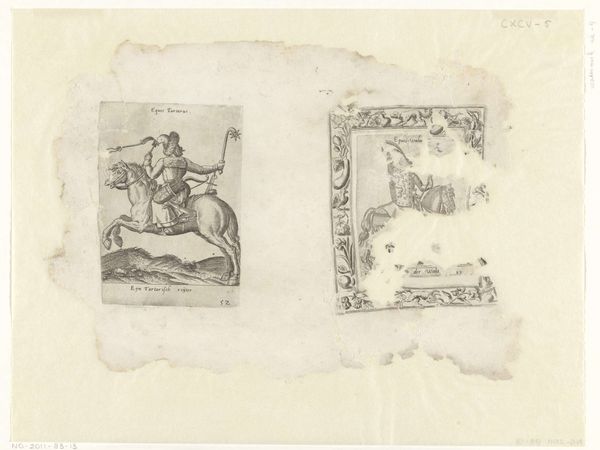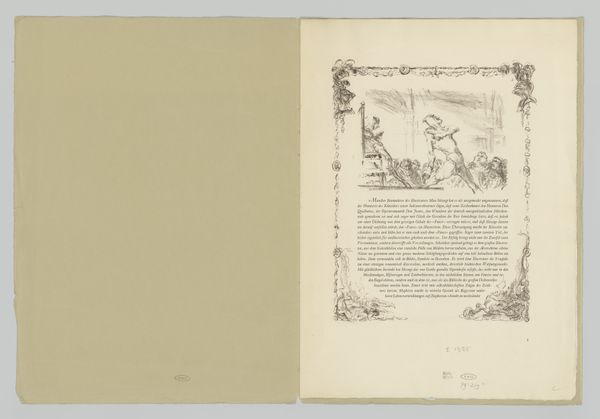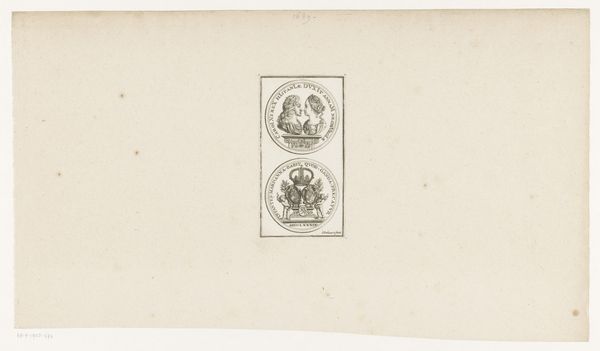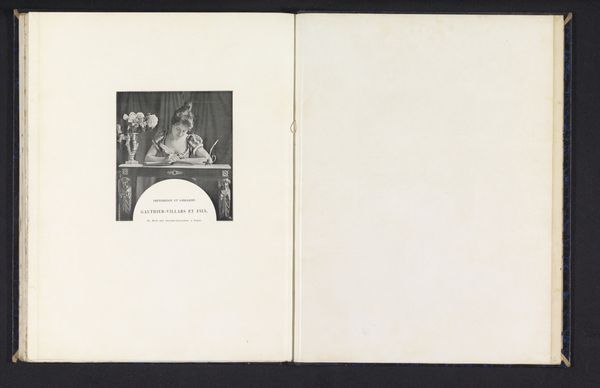
Medaillon med portrætter af Ludvig XVI, hans dronning og søn 1793
0:00
0:00
#
neoclacissism
# print
#
history-painting
#
watercolor
Dimensions: 93 mm (height) x 184 mm (width) (plademaal)
Curator: Here we have a print from 1793 by G.N. Angelo titled "Medallion with portraits of Louis XVI, his Queen, and son," now housed at the Statens Museum for Kunst. The inscription indicates its probable commission soon after their execution. Editor: The sepia tone immediately gives it a somber, historical weight. It’s striking how compact the composition is, the figures pressed into the circular medallion like prisoners themselves. Curator: Indeed. Angelo has employed neoclassicism, referencing classical portrait medals that conveyed status, but here serving as a memorial to the French royals executed that very year. The print becomes a form of political propaganda. Editor: It’s interesting that a print medium was chosen. This isn’t a grand oil painting destined for a palace. It’s reproducible, made for circulation and consumption by a wider public. Were these images dispersed by royalist sympathizers, as a method to grieve and consolidate resistance efforts in the wake of their regicide? Curator: Quite possibly. It highlights how printed images fueled both the Revolution and reactions against it, as evidenced by the printed text surrounding the portrait itself on the left. Such easily transported and displayed art functioned to either affirm the changes underway or to lament their devastating personal costs, thereby inciting various emotional responses within revolutionary-era publics. Editor: And look at the materials – likely affordable paper and ink, making it accessible for mass production. I imagine artisans churning these out to meet the demand for royalist remembrance. It’s the machinery of mourning, functioning not so differently from commemorative goods sold after celebrity deaths today. Curator: I agree. It demonstrates how social and political anxieties intertwined with the development and distribution of visual art, cementing how accessible forms of visual culture informed opinions across society. Editor: It’s fascinating to see how these affordable portraits, created from readily available materials, offered emotional and ideological touchstones during such tumultuous events. It's both tragic and, in its own way, intensely powerful.
Comments
No comments
Be the first to comment and join the conversation on the ultimate creative platform.
